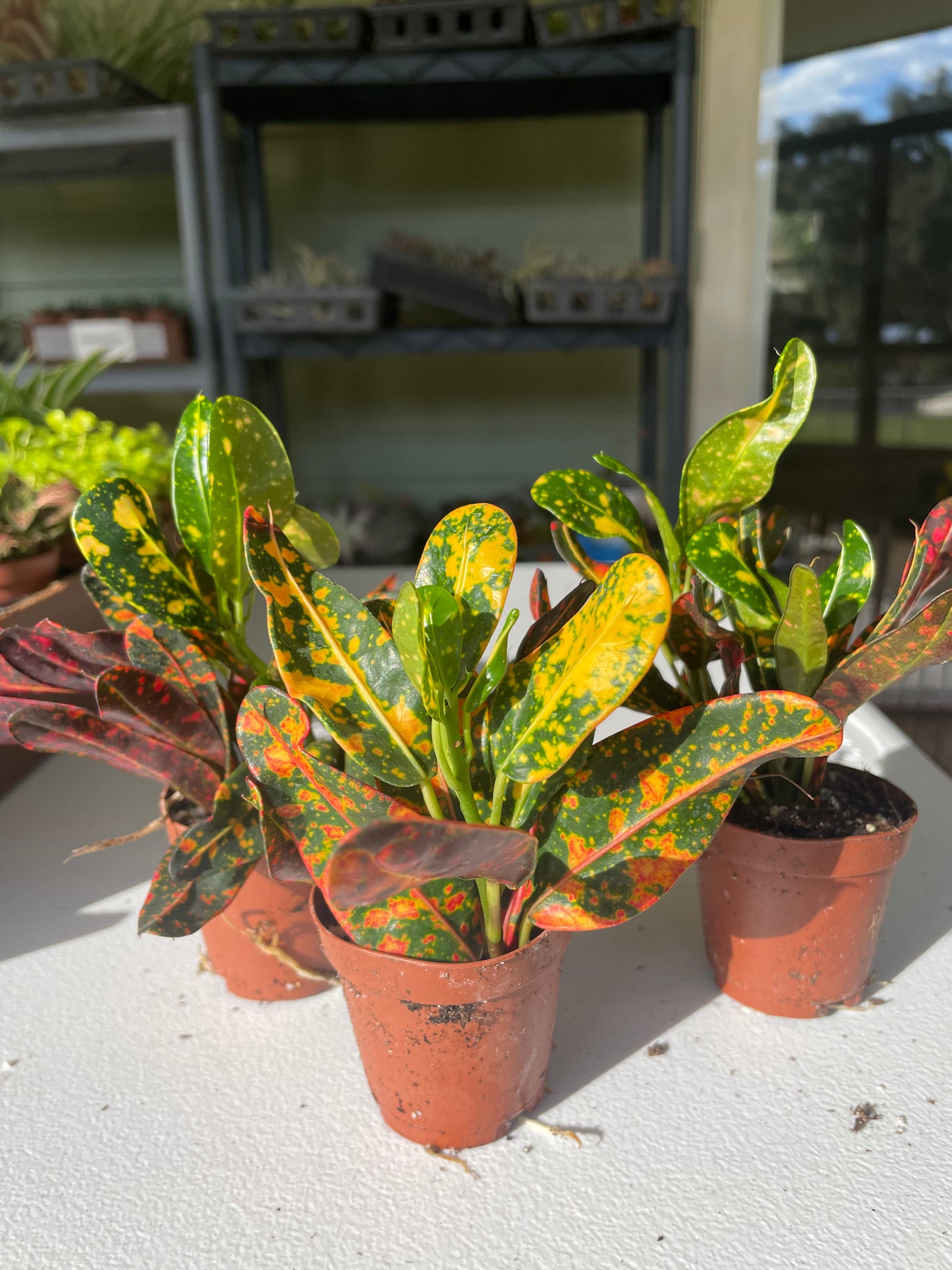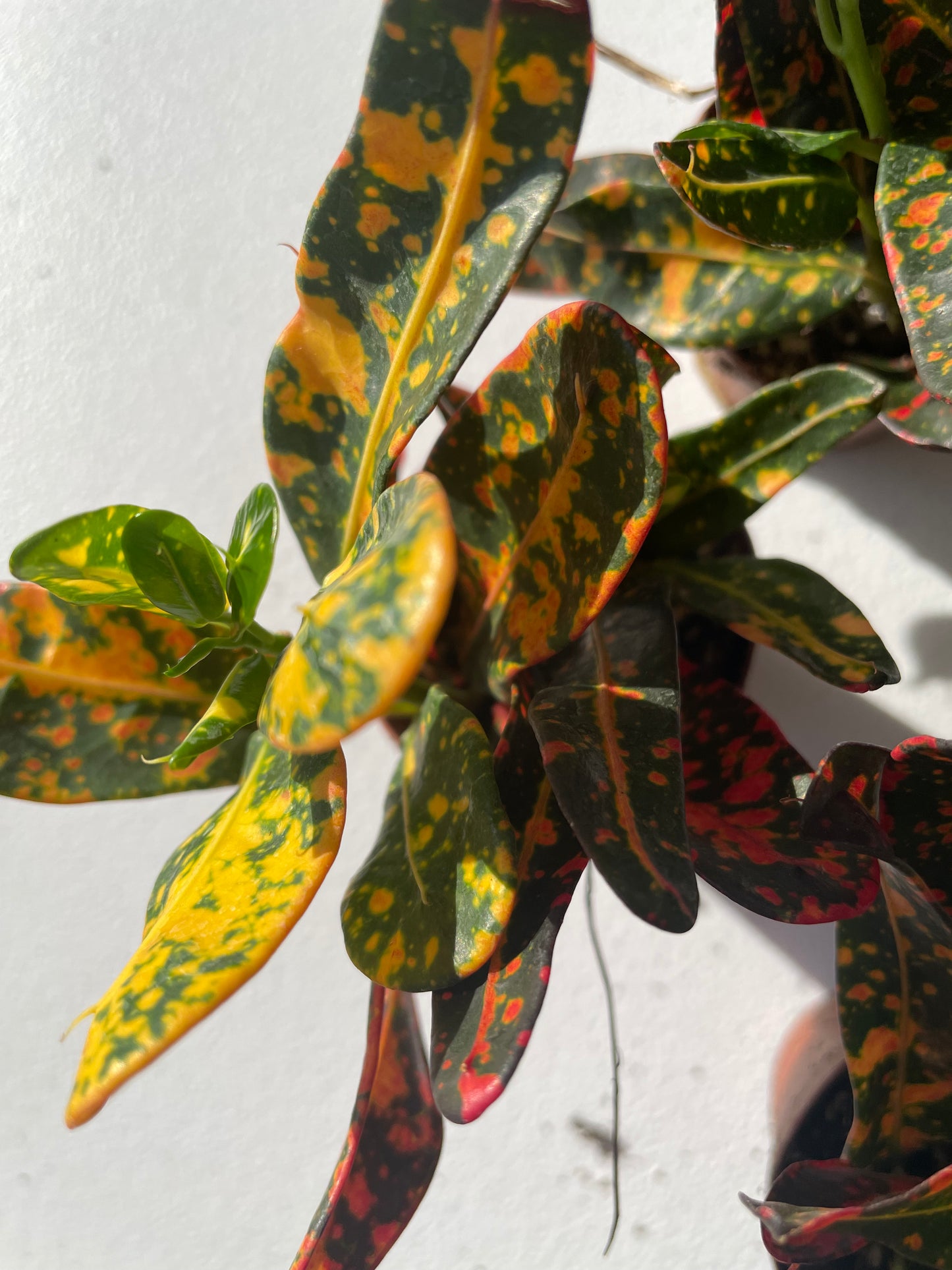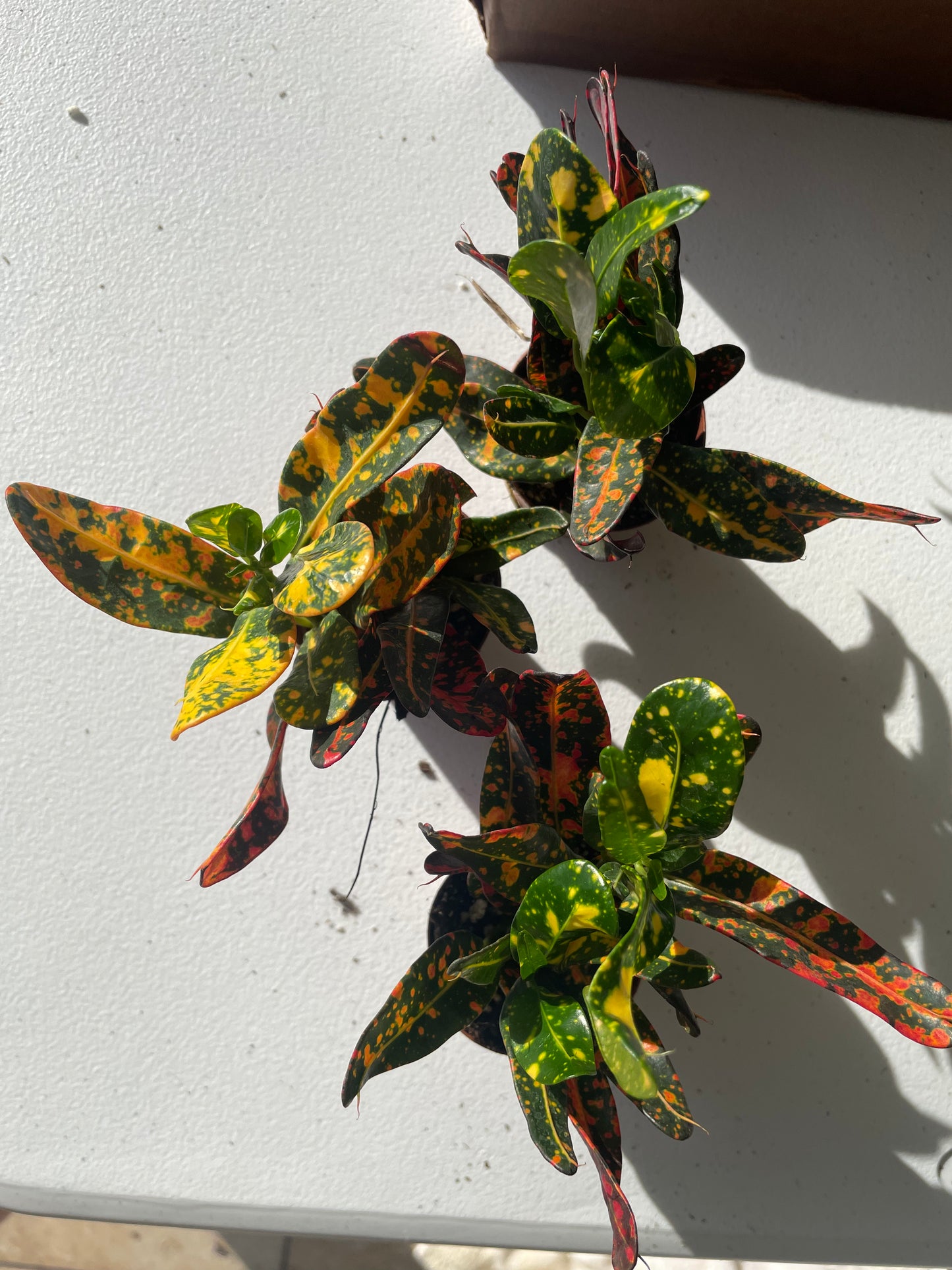Codiaeum Variegatum "Croton"
Couldn't load pickup availability
**Codiaeum Variegatum ‘Croton’**
**Plant Care Guide**
**Description:**
The Codiaeum Variegatum, commonly known as ‘Croton,’ is a vibrant and visually striking tropical plant admired for its bold and colorful foliage. Native to Southeast Asia, Croton plants are popular choices for both indoor and outdoor cultivation due to their stunning array of leaf patterns and colors. The leaves can come in various shapes, sizes, and color combinations, ranging from deep greens and bright yellows to fiery reds and oranges. Croton plants make fantastic ornamental additions to homes, offices, and gardens, instantly adding a touch of tropical charm.
**Light:**
Croton plants thrive in bright, indirect light. While they can tolerate some direct sunlight, excessive exposure can lead to leaf scorching and fading of colors. Place your Croton near a window with filtered light or provide artificial light if growing indoors. Rotate the plant occasionally to ensure even growth and color development.
**Temperature and Humidity:**
Maintain a warm and humid environment for your Croton. Ideal temperatures range between 60°F to 80°F (15°C to 27°C). Avoid exposing the plant to drafts or sudden temperature changes, which can cause stress and lead to dropping leaves. A humidifier or regular misting can help create the necessary humidity levels, especially in drier indoor environments.
**Watering:**
Keep the soil consistently moist but not waterlogged. Water the Croton when the top inch of the soil feels dry to the touch. Avoid letting the plant sit in standing water, as this can lead to root rot. During the growing season (spring and summer), you may need to water more frequently, but reduce watering in the dormant season (fall and winter) when the plant's growth slows down.
**Soil:**
Use a well-draining potting mix that retains some moisture but prevents waterlogging. A mix containing peat moss, perlite, and pine bark works well for Croton plants. Repotting every 1-2 years in a slightly larger container with fresh soil can help prevent the plant from becoming root-bound.
**Fertilization:**
Feed your Croton with a balanced, water-soluble fertilizer every 4-6 weeks during the growing season (spring and summer). Dilute the fertilizer to half the recommended strength to prevent overfeeding, which can lead to burnt leaves. Avoid fertilizing during the dormant season.
**Pruning:**
Regularly prune your Croton to maintain its shape and encourage bushier growth. Pinch or trim the tips of the stems to promote branching. Remove any dead or yellowing leaves promptly to enhance the plant's overall appearance.
**Pests and Diseases:**
Keep an eye out for pests like mealybugs, spider mites, and scale insects. These pests can be treated with neem oil or insecticidal soap. Adequate air circulation and proper watering practices can also help prevent fungal issues.
**Propagation:**
Croton plants can be propagated through stem cuttings. Take a 4-6 inch cutting with several leaves and plant it in a well-draining potting mix. Place the cutting in a warm, humid environment and mist it regularly until it establishes roots.
**Caution:**
It's important to note that Croton plants are considered toxic to pets and humans if ingested. Keep them out of reach of curious pets and children.
By following these care guidelines, you can enjoy the vibrant and captivating beauty of the Codiaeum Variegatum "Croton" plant in your living space, indoors, or outdoors.






